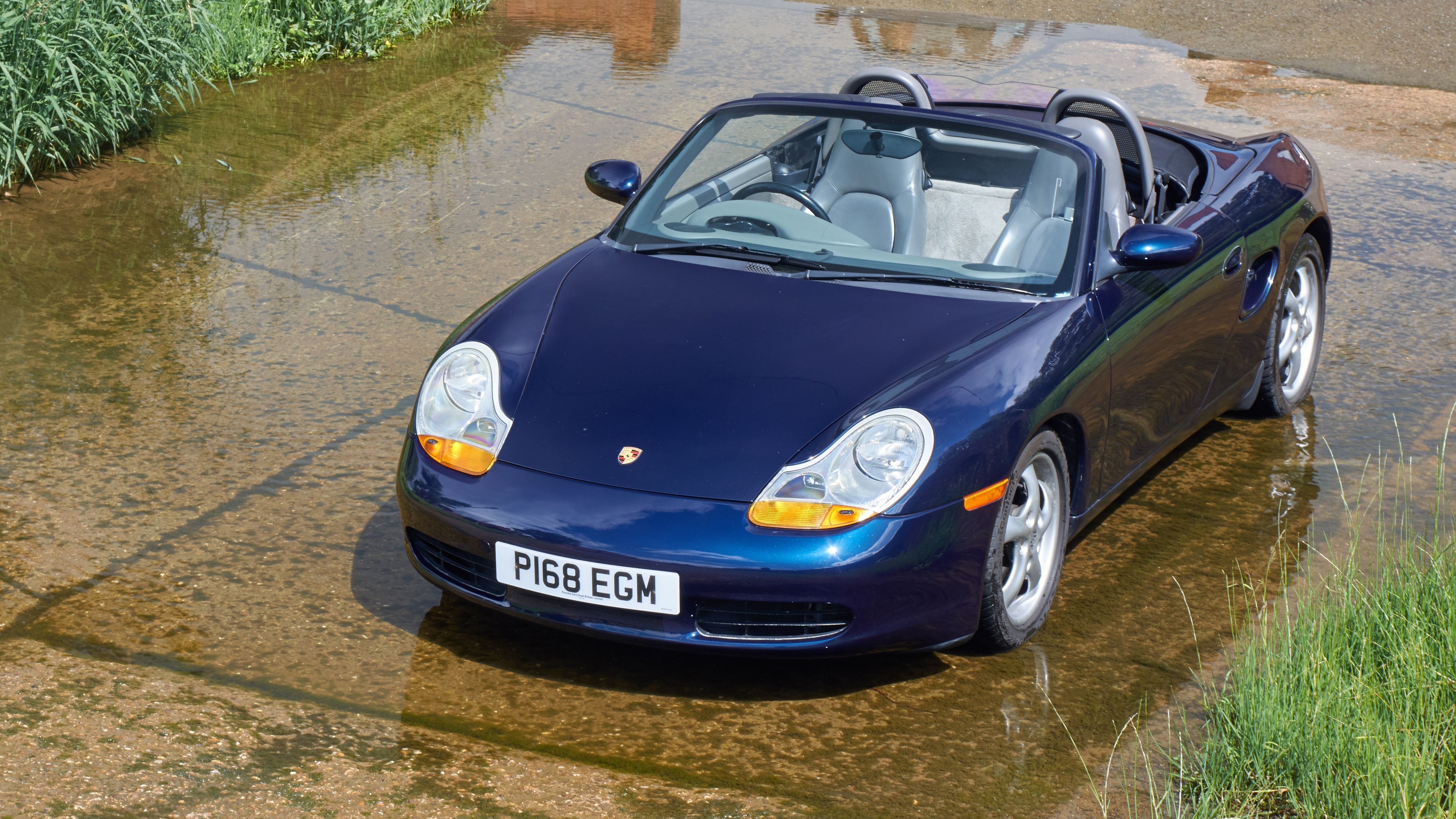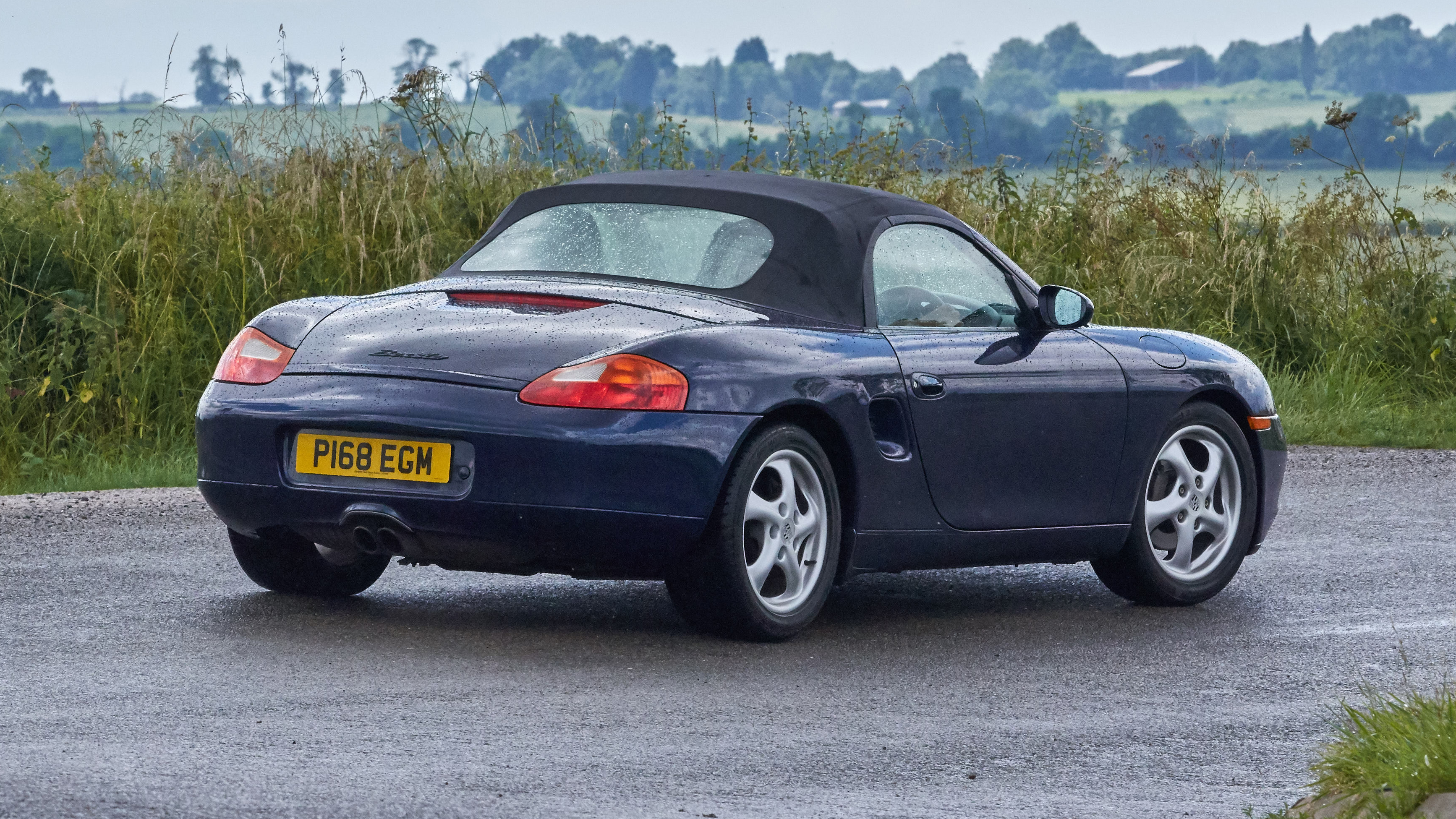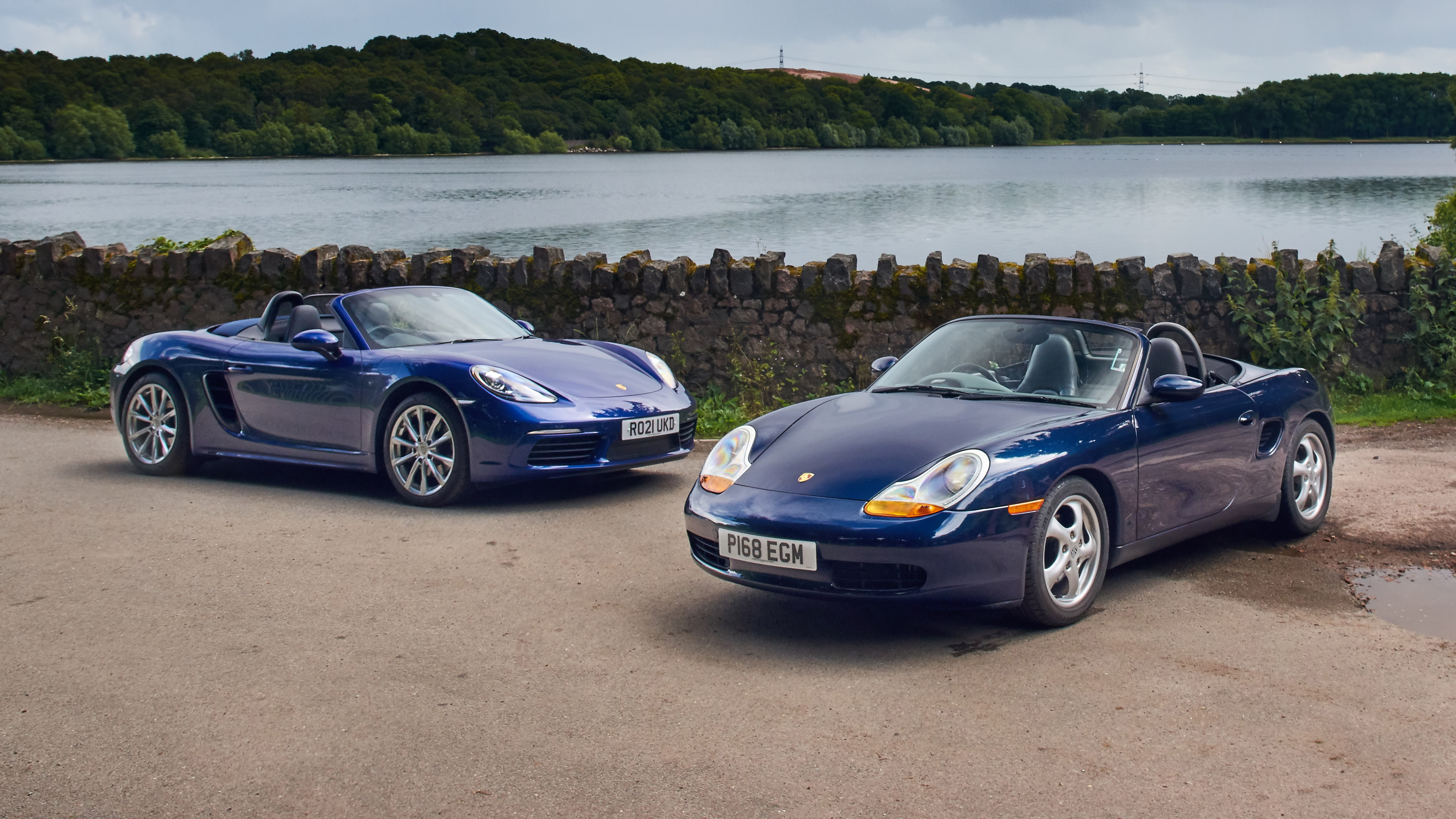
Good stuff
Wonderful to drive. Good to own. Prices are far less than a 911 996
Bad stuff
Not that quick. Ignorant folk sneer it's 'just' a poor 911-substitute
Overview
What is it?
A car that needs no introduction really. But here's one. It was a two-seat roadster that was sublime to drive without punishing you in the daily grind.
Which, right from its intro in 1996 made it an obvious choice once you'd stepped above an MX-5 in power and price. As with many Porsches, the Boxster immediately defined its category.
It was pure sports car, having no parts in common with anyone else's saloon. That's what made it feel so special.
It has dominated the (diminishing) class ever since. Basically, you can buy pretty much any Boxster ever made since then, and still have a car that does the same job in the same way with the same success. The only possible exception is the four-cylinder 718, but we've talked about that elsewhere.
The Boxster was a re-boot for Porsche, which at the time was peering over a cliff-edge. Its range previously consisted of the 911, 968 and 928. They were expensive to build, partly because the three had nothing in common. And the latter two were losing money.
So Porsche rationalised. Sit in an early Boxster and pretty well everything ahead of your spine is shared with a 911. Porsche learned that trick from the VW Group: sit in an early TT Roadster and pretty much all the mechanicals were shared with a Skoda hatchback.
Why do I want one?
Central – literally – to the Boxster's appeal is a captivating, purebred six-cylinder engine, all-new for the car. It sits right behind you, where the 911 has its rear seats. And that mid-engine layout is what makes the Boxster feel very different from a 911. More stable, less challenging.
And all the rest of it is purebred Porsche. Aluminium suspension, strong brakes. Most of all, its controls have an uncanny precision that really draws you into the machine.
Does it look as good as it drives?
Porsche's habit is evolution, rather than discontinuities between generations. It's the same here. If you know the new one, you'll recognise the first one, codenamed 986. The old one is a bit smaller than now, and its corners and edges are more oval – like a beach pebble, eroded by sand and waves. A hidden, electrically rising spoiler permits the gently tapering tail.
Porsches are fast, eh?
In base form as tested here, it started at 2.5 litres and just 204bhp. Only just enough to crack seven seconds 0-62. The torque peak is just 181lb ft – there are one-litre Fiestas with almost that figure these days.
Everyone said the wonderful chassis could take more, so in 1999 it soon grew to 2.7 and 220, with an S version to do the heavy lifting with 252bhp from 3.2 litres. By the end of the 986's run, standard and S outputs were up to 240 and 280bhp.
It's a five-speed gearbox in the early base car, with other versions getting six. You could also have a five-speed Tiptronic auto. That's less fun, and dulls the acceleration, but on an old car an auto probably saves the rest of the drivetrain from damage by an owner with a turnip for a clutch foot.
What's the verdict?
Driving a Boxster isn't a 'giggle', like with some other sports cars of moderate power. It's a more serious kind of joy. It engages all your senses, allots your every tiny input a commensurate output. It's not going to awe you or overpower you. It simply works with you in a deeply satisfying way.
And yet amid all the talk of the driving, don't forget it's also refined, robust, comfortable and practical.
It was a riotous success, a third of a million and counting. So there's a huge selection of used ones to choose from.
Featured

Trending this week
- Car Review
BMW 1 Series
- Top Gear's Top 9
Nine dreadful bits of 'homeware' made by carmakers






